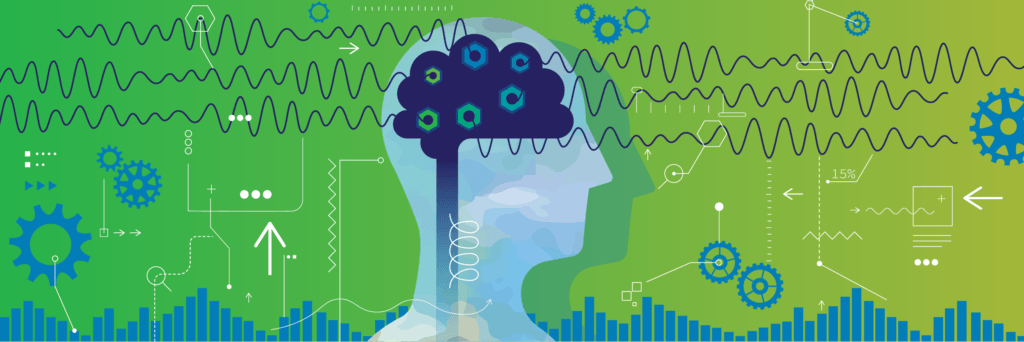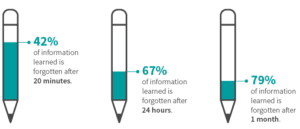Forget the Forgetting Curve: This is How to Increase Employee Learning Retention

You remember the Forgetting Curve (no pun intended): Hermann Ebbinghaus, a 19th-century German psychologist, discovered that humans forget newly memorized information at an alarming rate. He illustrated this phenomenon with a rapidly downward-sloping curve to show how quickly memory loss occurs.
Ebbinghaus’s Forgetting Curve
Ebbinghaus’s Forgetting Curve illustrates how memory retention declines over time when information is not reinforced. The curve shows that without review or practice, we tend to forget a significant portion of what we have learned, with the steepest decline occurring shortly after initial learning.

As an L&D professional, you know how important employee learning retention is to the effectiveness of their performance on the job.
Unfortunately, that’s how our brains work when new information is provided in a passive manner, such as reading, without significant efforts to review and retain it. Memorization simply doesn’t work for long-term retention.
Impact of the forgetting curve on employee L&D
Even though training expenditures rose nearly 12% to 92.3 billion in 2020-2021, training outcomes still fell short of expectations. Why?
A big challenge is getting people engaged in remote training at 31% (up from 19% last year). And 33% of U.S. workers say their current company-provided training doesn’t meet their expectations.
A big factor in how well employees retain information is how engaging and relevant training content is to their jobs and career development, otherwise it’s easy to forget. This can be virtually impossible without the right system in place to help you focus on the objective, engagement, and useability of training content.
What can you do to avoid the dreaded Forgetting Curve, and improve employee learning retention?
The beauty of employee microlearning
Rather than wait between learning a new skill and using it, give employees the ability to learn within the context of their jobs and immediately apply new knowledge. There’s a multitude of ways to do this, but microlearning is proving to be the most impactful for long-term retention.
Short bursts of training are much easier to consume, and bite-sized training also focuses on a single skill, topic, or problem. Your information should range in length from about three to ten minutes and include interactive elements like videos, interactive graphics, or flashcards.
Because microlearning is “active learning,” you can achieve up to 90% knowledge retention and 50% more engagement with training content. That’s quite a jump from 33% retention in virtual instructor-led training, and so much better for employee knowledge retention.
Ebbinghaus would have agreed: he believed that practicing something—rather than memorizing it—helps us achieve a state of “overlearning,” which lowers the likelihood of information being forgotten.
Employee microlearning, anytime, anywhere
Imagine how powerful your employee L&D can be when employees have mobile devices at hand, and the information needed to perform job duties, learn a new skill, or answer customer questions is always at their fingertips. Rather than struggling to remember something that was taught days, weeks, or even months ago, employees can simply do a quick search to find the right information when it’s needed.
Best of all, mobile learning brings together learning and doing in the workplace to foster learning in the flow of work. Coupling these actions not only elevates the overall employee experience but also improves engagement, development, and retention. Think of it as shifting your L&D strategy from a state of teach, study, test to find, learn, do so you can really empower employees and drive business results.
